About ACIS
Major responsibilities of each Division
Deputy Chief Director
Provides overall coordination concerning the review of registered agricultural chemicals (reevaluation), and the improvement of assessment methodologies for agricultural chemicals, based on the latest scientific knowledge and information and global developments in the regulation of agricultural chemicals.
Operation and Strategy Division
Provide managerial services related to internal control within FAMIC, including setting operational goals and monitoring achievements. Also conducts customer surveys and public relations concerning the registration of agricultural chemicals and oversees various surveys and researches conducted by other divisions with a view to strengthen scientific bases of evaluations.
Pesticide Registration Division
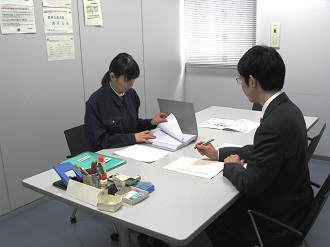
Receipt of registration application form
Manages the applications for the registration of agricultural chemicals, acting as coordinator between specialized evaluation divisions, applicants and MAFF and maintaining the data and information of registered agricultural chemicals. Also plans and oversees on-site inspections of manufacturers of agricultural chemicals for reporting to MAFF.
GLP Monitoring Division
Conducts laboratory inspections and study audits in test facilities carrying out studies to be submitted for the registration of agricultural chemicals, with a view to monitoring their compliance with the OECD Principles of Good Laboratory Practice (GLP), Also acts as the contact point of the GLP compliance program on agricultural chemicals in Japan, for the correspondence and coordination with other GLP monitoring authorities in Japan and the OECD Secretariat.
Operator Safety Evaluation Division
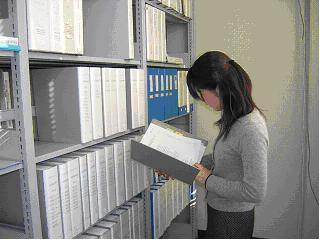
Review of the toxicological study reports submitted by the applicant
Determines if the agricultural chemical under evaluation is safe for its operators, based on the results of various toxicity tests (e.g. acute toxicity, eye and skin irritation, skin sensitization, chronic toxicity, carcinogenicity, reproduction, teratogenicity and mutagenicity), along with proposed use instructions and precautionary statements including recommended personal protective equipment.
Environmental Behaviour Evaluation Division
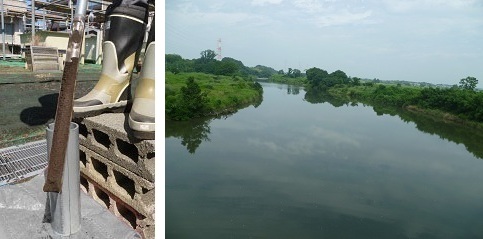
Agricultural chemical residue analysis in soil (left picture)
Based on the tests of behavior in soil/water, residues in soil, water pollution and other related tests, as well as predicted environmental concentrations (PEC) on water pollution, the appropriate application methods of agrochemicals and precautions will be determined to prevent succeeding crops pollution and causing adverse effects on humans via ingestion of river water. Additionally, research is conducted to improve examination techniques related to Environmental Behaviour assessment.
Ecological Effects Evaluation Division
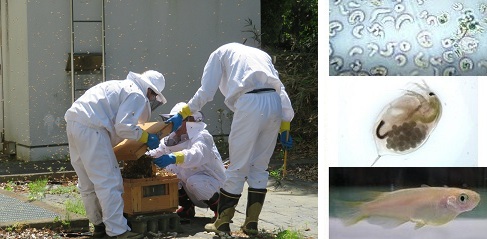
Test organisms for tests of the effects on various organisms
Based on the tests of the effects on various non-target organisms such as honeybees, silkworms, and living environment flora and fauna (e.g., fish, daphnia, algae, birds and wild Bees), as well as predicted environmental concentrations (PEC), appropriate application methods and precautions for preventing damage from agrochemicals are established. Additionally, research is conducted to improve examination techniques related to ecological risk assessment.
Pesticide Quality Evaluation Division
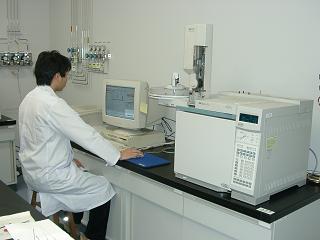
Active ingredients analysis in end-use-product by GC
Determines if the identity of the agricultural chemical under evaluation, such as composition, chemical name of the active ingredient, physical and chemical properties of the formulation (e.g. stability, suspensibility and particle size) is properly reported. Also makes sure that the content of the active ingredient in the formulation can be determined with the proposed analytical methods, which will be used in analyzing the samples collected during on-site inspections of the manufacturer after the agricultural chemical is placed on the market.
Efficacy and Phyto-toxicity Evaluation Division
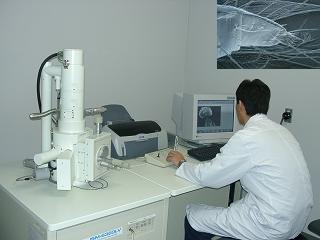
Identification of natural enemy using scanning electron microscope
Determines if the agricultural chemical under evaluation is efficacious and safe to crops if used according to the proposed use instructions and taking account of relevant precautionary statements. Also makes sure that the content of the active ingredient of a biological agent (e.g. microbial and macrobial) can be determined with the proposed biological test method, which will be used in checking the samples collected during on-site inspections of the manufacturer after the biological agent is placed on the market.
Pesticide Residue Evaluation Division

Agricultural chemical residue analysis in crop
Determines if the residues in or on crops of the agricultural chemical under evaluation would not cause adverse health effects when ingested directly or via products derived from livestock fed with the crops. Evaluation is based on residue chemistry such as metabolism in plants and livestock and residues in crops and livestock, along with proposed use instructions and any relevant precautionary statements.
Pesticide Residues Monitoring Division
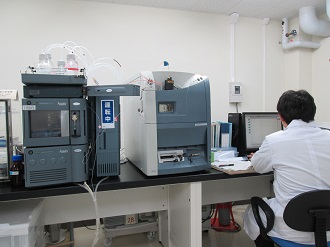
Conducts a nation-wide survey to monitor the use of registered agricultural chemicals and their residues in or on crops in order to confirm that maximum residue limits are not exceeded when agricultural chemicals are used in accordance with good agricultural practice, namely, following use instructions and taking account of precautionary statements.
Precision Management Specialist
Provide advice and interdivisional coordination on matters necessary to ensure the quality of analyses undertaken by ACIS, including the operation of the quality management system and the maintenance of analytical instruments and chemical substances.

